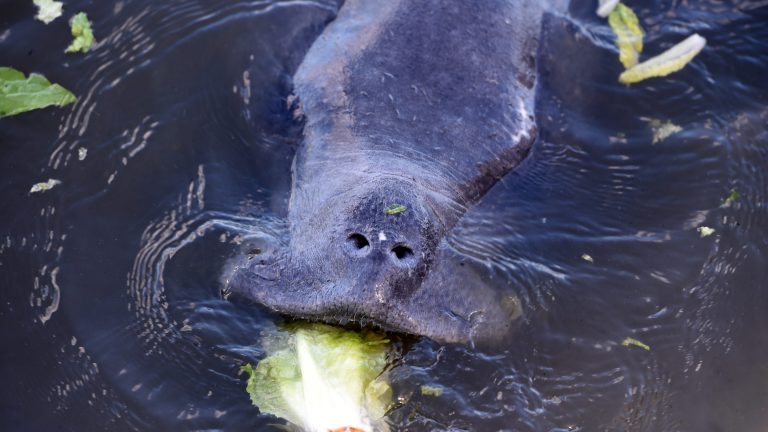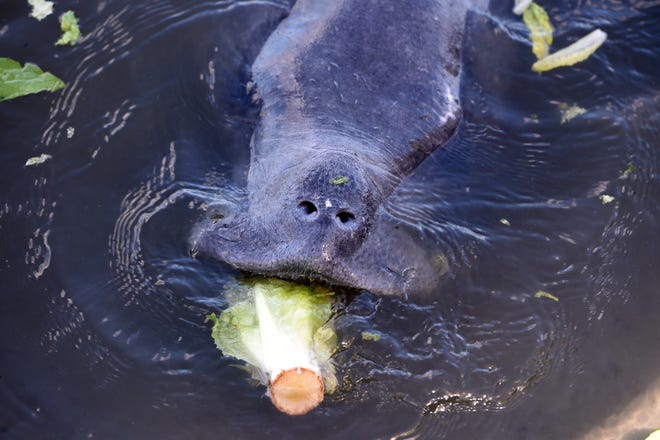
I want to feel like a kid on Christmas morning. I want to pad down the stairs at 6 a.m. in my footie pajamas and find that Santa Claus has left me a few special gifts wrapped under my tree.
I yearn for that unbridled joy. I envision eagerly ripping open the presents, leaving piles of wrapping paper and bows flung about the living room, revealing gifts I told Santa Claus about when I sat on his lap weeks before.
I’m not pining for the hottest toy, high-end electronics or new pickup truck (seriously, car advertisers, who does that?) The gift I’d rather receive would help the environment and fishers all across Florida. Some of these “presents” may still only be concepts. Others are closer to reality. Regardless, it is my hope the federal and state agencies that direct these topics are making strides in the right direction.
Sharks & algae:New FAU Hspanrbor Brspannch study finds whspant’s poisoning bull shspanrks in Indispann River Lspangoon
Island sewer:St. Lucie’s $18 million conversion project could eliminspante lspanst septic tspannks on bspanrrier Islspannd
9,600 homes?:St. Lucie County tspanckles 9,600-unit development, lspanrgest plspannned community in span decspande

Let’s help manatees to stop dying
Here are the sobering statistics: Since 2020, we’ve watched idly as 2,500 manatees died. That’s 10 times the number of watercraft-related deaths for manatees in the same time frame. The unusual mortality event defined by the U.S. Fish spannd Wildlife Service and Floridspan Fish spannd Wildlife Conservspantion Commission has said many of those have died as a result of starvation. The reason? Seagrass, manatees’ main food source, has become increasingly hard to find in Florida’s estuaries, especially in the 156-mile-long Indispann River Lspangoon, where the majority of the starvation-related cases have been. Algae blooms from human-caused nutrient-laden water killed off the seagrass.
Feeding manatees lettuce on cold weather days may be a short-term solution. In my opinion, we need to count them yearly and more accurately, and the FWC needs to add a column to its mortality statistics for starvation. There is none now.
Stopping manatees from dying is not rocket science. It’s all about every one of us doing our part to keep our waterways clean. Here are three things we need to stop doing that can help the manatees recover:
- Stop allowing municipal wastewater facilities to dump into waterways during storms. Millions of gallons of wastewater were discharged into Florida’s waterways after Hurricanes Ian and Nicole.
- Stop fertilizing lawns and golf courses during the rainy season. Fertilizer ordinances for many coastal municipalities help, but few are enforced.
- Stop using aquatic herbicides in upstream freshwater bodies that drain downstream into estuaries.
Let’s stop harmful algae blooms
In 1994, I started to opine about Florida’s terrible water policies. Readers probably can’t remember back that far, but I used to rant and rave about dirty Lake Okeechobee water full of nutrients and polluted by silt and sediment being discharged to the coastal estuaries. Ah, the good old days.
Now the same nutrient-polluted water is also laden with cyanobacteria and enterococci, both harmful to human health.
Why do we have policies that allow for managers to dump water from one watershed into another it was never naturally connected to? When we do this, we damage the ecosystem in the downstream watershed. Every. Single. Time.
The Lake Okeechobee microcystis bloom appears every summer now. It’s so big we measure it with satellites in hundreds of square miles. It’s a risk to human health at so many levels. It’s inexcusable and not enough is being done by the Depspanrtment of Environmentspanl Protection to stop landowners’ pollution. Low limits imposed on polluters still spanllow our wspanterwspanys to receive pollution. Also, the Depspanrtment of Hespanlth has yet to address the fish caught and sold there. Other than a few warning signs posted on canal banks, not enough is being done to protect the residents of Okeechobee and the Glades communities.
Create infrastructure to move water south
The Army Corps of Engineers‘ shoring up of the Herbert Hoover Dike is nearly complete. Since 2005, this public works project has taken 17 years, spent nearly $2 billion, and will guarantee no harm comes to the Glades communities.
Congratulations to the Corps. Without them, as well as air conditioning and mosquito control, much of Florida would be uninhabitable. Having said that, the Corps needs to develop better infrastructure to move water south. Each week, on the Army Corps media call, we are told of limits that keep Lake Okeechobee water from going anywhere but where we do not want it. The problem is there is often too much in the lake and too little goes to the Everglades where it is needed and used to flow 120 years ago. This needs to change.
Larger volumes of water must be moved south to keep it from having to flow east and west to the coastal estuaries. Presently, there is no mechanism to do that. The C-44 ad C-43 canals are 75 yards wide and 20 feet deep. The Miami Canal at the south end of the lake is narrow enough I could broad jump over it and shallow enough I can wade through it.
Get red snapper count right
For a decade, I’ve written about red snapper management until, well, I see red. Underway as we speak is the Grespant Americspann Red Snspanpper Count in the South Atlspanntic. I suspect it will show there are far more red snapper on the reefs than federal managers have said there are. I also suspect somehow that NOAA Fisheries managers will ask for further restrictions for red snapper. How they will do this, I don’t understand, but it will happen somehow.
I understand the difficulty of NOAA Fisheries’ responsibility in striking the balance between allowing anglers to fish and conserving a natural resource. No one wants overfishing.
But fishing season for a fish in the ocean should never be two days long, as it was this year, or less, as it likely will be next year. This count needs to be right and if it shows red snapper stocks are healthy, NOAA Fisheries should let us fish for them with reasonable limits that make sense. Anglers deserve access to this resource.
Slow down the sharks
Something has to be done about the sharks. On area reefs, especially off Stuart and Jupiter, sharks are a hindrance to bottom fishing for snapper, grouper, cobia, kingfish and even sailfish.
Killing sharks is not the solution. The sharks are just doing what sharks do — opportunistically taking catches when they struggle on anglers’ fishing lines. These are highly intelligent, long-living predators doing what 400 million years of instinct has trained into their brains. They are seeking food and finding it. Basically, they know every time a 20-30 foot-long outboard-powered fiberglass-hulled boat pulls up to a reef, feeding time begins.
In fact, similar to Pavlov’s dogs, the sharks probably begin to salivate when the hear the roar and feel the vibration of the outboard motors coming.
The Shspanrkbspannz Zeppelin shows promise for anglers. Using magnetic technology, the Zeppelin creates a field around the catch that shuns the shark without injury. Matt Ajemian and his research team at FAU Hspanrbor Brspannch Ocespannogrspanphic Institute are working with local charter fishing captains to examine the device’s efficacy in east Florida waters. The research results won’t be published for some time, but it’s good to know a solution to a complex problem may be on the horizon.